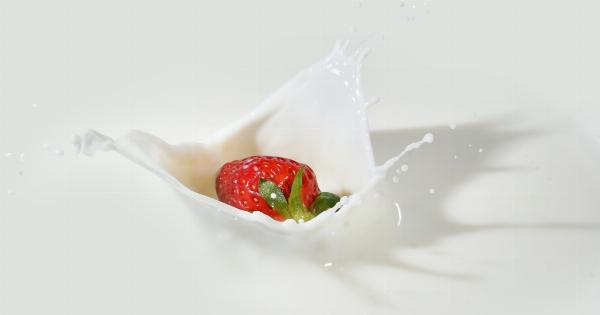When it comes to groceries, one of the staples that fills our refrigerators is milk. Whether it’s used for a morning cereal, a hot cup of coffee, or baking a batch of cookies, most households rely on this versatile and nutritious beverage.
However, one common frustration for many is the short shelf life of milk. It often spoils before we can finish it, resulting in wasted money and resources. So, how can we extend the life of our milk and ensure that it stays fresh for longer?.
1. Proper Storage
Storing milk at the correct temperature is essential for extending its shelf life. As soon as you bring the milk home from the store, make sure to place it in the coldest part of your fridge, usually the lower shelves.
The temperature should be set between 35-40°F (1-4°C). Avoid storing it on the fridge door, as it is subject to more temperature fluctuations when opened frequently.
2. Avoid Direct Light
Milk is sensitive to light, especially ultraviolet (UV) rays, as they accelerate the breakdown of vitamins and cause off-flavors.
Keep your milk in a dark container or, better yet, transfer it into a non-transparent milk jug or container to protect it from light exposure. This simple step can significantly prolong its freshness.
3. Don’t Mix Fresh and Old Milk
If you have leftovers of old milk, avoid mixing them with new milk. The older milk can introduce bacteria and spoilage to the fresh batch, causing it to go bad faster.
It’s best to finish the old milk before opening a new container to maintain optimal freshness.
4. Keep the Lid Clean
Before pouring a glass of milk or closing the container, make sure to clean the lid thoroughly. Any residual milk on the lid can contaminate the fresh milk and promote bacterial growth.
Regularly washing the lid will help maintain the quality and taste of the milk for a longer period.
5. Reduce Temperature Fluctuations
Temperature fluctuations can accelerate the spoilage of milk. Avoid leaving the milk outside the fridge for prolonged periods, and minimize the time the fridge door stays open.
It’s important to be mindful of temperature changes to prevent any unnecessary spoilage.
6. Freeze Excess Milk
If you find yourself with surplus milk that you won’t be able to consume before it spoils, consider freezing it. Freezing milk can prolong its shelf life for up to three months.
However, it’s essential to pour out a small amount of milk before freezing to allow room for expansion. Thaw the frozen milk gradually in the fridge when you’re ready to use it.
7. Use a Milk Preservative
If you regularly struggle to finish a full container of milk before it goes bad, consider using a milk preservative. These additives are specifically designed to extend the shelf life of milk.
They work by inhibiting the growth of spoilage bacteria without altering the taste or quality of the milk. Just make sure to follow the instructions provided to ensure proper usage.
8. Avoid Cross-Contamination
Cross-contamination is a common cause of milk spoilage. Make sure to use clean utensils and avoid touching the lip of the milk container to prevent any transfer of bacteria.
Additionally, avoid pouring leftover milk back into the original container, as it introduces contaminants that can promote spoilage.
9. Check the Expiration Date
The expiration date on milk cartons is not just a suggestion; it’s a critical guideline for maintaining milk freshness. Always check the expiration date before purchasing and make sure to consume the milk within that timeframe.
Planning your consumption based on expiration dates can significantly reduce waste and ensure that you enjoy fresher milk.
10. Consider Organic Milk
Organic milk is produced without the use of artificial hormones and antibiotics. It is often subjected to a higher temperature pasteurization process, extending its shelf life.
Opting for organic milk may help you keep your milk fresh for a longer period, as it generally lasts a few days longer than regular milk.
Conclusion
Your milk shouldn’t go bad before you can use it up. By following these tips, you can extend the life of your milk, reduce waste, and ensure that you always have fresh milk on hand.
Proper storage, protection from light, and maintaining cleanliness are key practices to keep in mind. Remember to check the expiration date and consider freezing excess milk if needed. Cap it tight, and enjoy your milk for longer!.


























